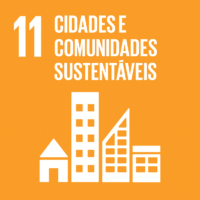Ciência-IUL
Publicações
Descrição Detalhada da Publicação
Networks and Opportunistic Urban Design: a strategy for regeneration of public spaces in Lisbon
Título Livro
New Urban Configurations
Ano (publicação definitiva)
2014
Língua
Inglês
País
Países Baixos (Holanda)
Mais Informação
--
Web of Science®
Scopus
Google Scholar
Abstract/Resumo
Network thinking has opened up new research fields for the understanding of city form. Cities are not completely predictable and they are much more about self-organised networks than about rational top-down planning and design. Self-organisation is a property of complex open systems and cities are no exception. Urban development and regeneration requires new creative responses and bottom-up-based approaches. However, a theory that creates a framework for examining self-organised cities was unavailable until recently.
Using complexity theories and network thinking, the design of cities should begin within an entirely new field, emerging in response to major changes in society. Also, the understanding of the concepts of scale-free networks, self-similarity structures, and the process of unfolding can be utilised to understand the cities’ form and to predict and design new developments efficiently.
Opportunistic urban design invites us to consider innovative urban design solutions that respond to a specific context. This abstract focuses on the discussion of these topics in a research project being developed in the city of Lisbon that considers the cross-referencing of its natural morphology with the city’s street movement, which generates a self-organised network composed of links (streets) and nodes (plazas). The final aim is to define a pedestrian network informed by the understanding of patterns of public life that enable a public space to become a successful place.
The main goal of this project is to explore opportunistic urban design solutions based on the identification of networks as a powerful structure to regenerate the city at different scales. If the purpose of top-down planning is to legitimise 'what should be done', opportunistic design thinking seeks bottom-up actions of 'what can be done’ - a process of creative thinking leading to more flexible, more inventive and more contextually responsive strategies of intervention in the urban environment.
Agradecimentos/Acknowledgements
--
Palavras-chave
Urban design, self-organisation, pedestrian, networks, space syntax
Contribuições para os Objetivos do Desenvolvimento Sustentável das Nações Unidas
Com o objetivo de aumentar a investigação direcionada para o cumprimento dos Objetivos do Desenvolvimento Sustentável para 2030 das Nações Unidas, é disponibilizada no Ciência-IUL a possibilidade de associação, quando aplicável, dos artigos científicos aos Objetivos do Desenvolvimento Sustentável. Estes são os Objetivos do Desenvolvimento Sustentável identificados pelo(s) autor(es) para esta publicação. Para uma informação detalhada dos Objetivos do Desenvolvimento Sustentável, clique aqui.

 English
English

